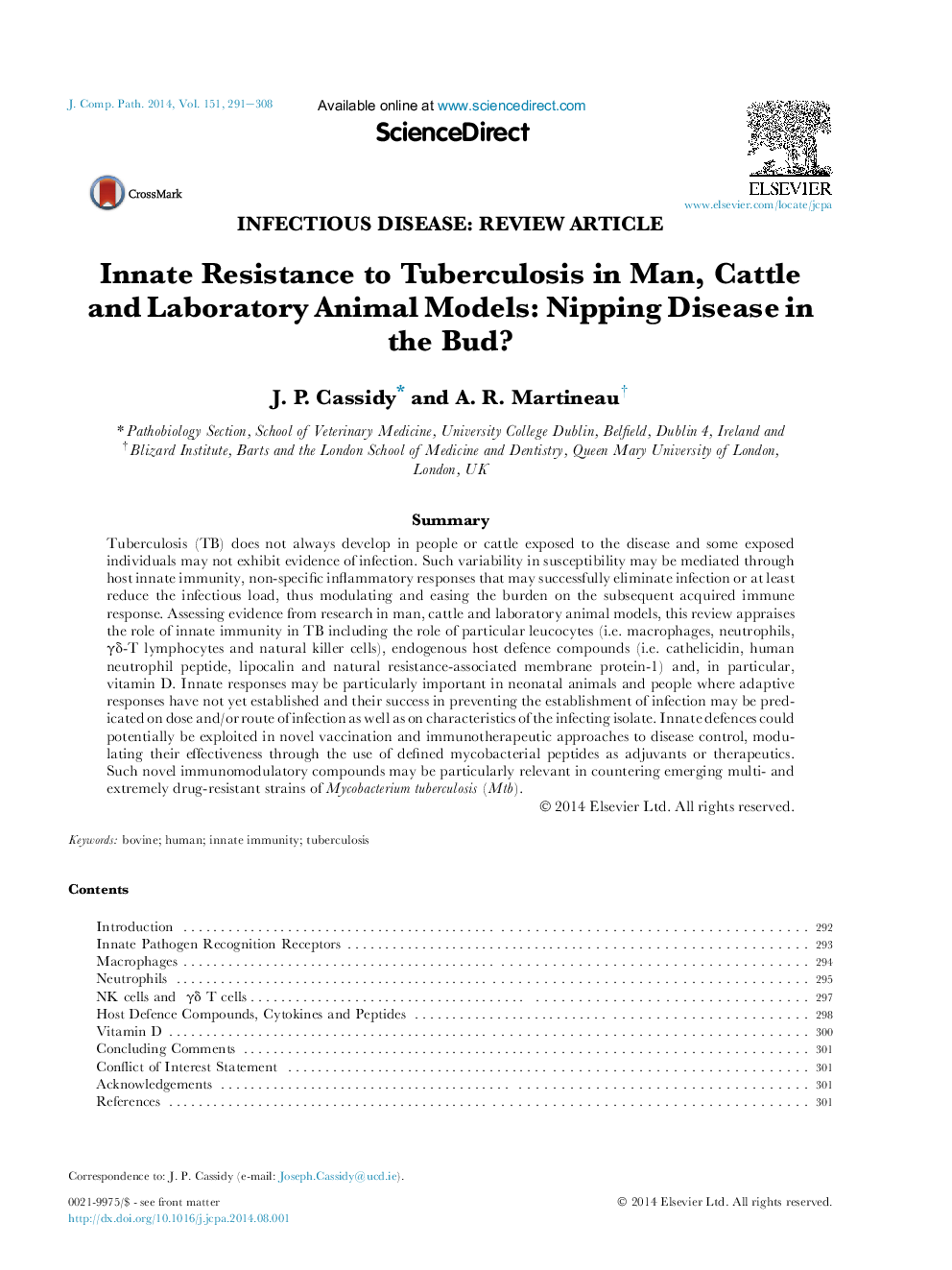| Article ID | Journal | Published Year | Pages | File Type |
|---|---|---|---|---|
| 2437218 | Journal of Comparative Pathology | 2014 | 18 Pages |
SummaryTuberculosis (TB) does not always develop in people or cattle exposed to the disease and some exposed individuals may not exhibit evidence of infection. Such variability in susceptibility may be mediated through host innate immunity, non-specific inflammatory responses that may successfully eliminate infection or at least reduce the infectious load, thus modulating and easing the burden on the subsequent acquired immune response. Assessing evidence from research in man, cattle and laboratory animal models, this review appraises the role of innate immunity in TB including the role of particular leucocytes (i.e. macrophages, neutrophils, γδ-T lymphocytes and natural killer cells), endogenous host defence compounds (i.e. cathelicidin, human neutrophil peptide, lipocalin and natural resistance-associated membrane protein-1) and, in particular, vitamin D. Innate responses may be particularly important in neonatal animals and people where adaptive responses have not yet established and their success in preventing the establishment of infection may be predicated on dose and/or route of infection as well as on characteristics of the infecting isolate. Innate defences could potentially be exploited in novel vaccination and immunotherapeutic approaches to disease control, modulating their effectiveness through the use of defined mycobacterial peptides as adjuvants or therapeutics. Such novel immunomodulatory compounds may be particularly relevant in countering emerging multi- and extremely drug-resistant strains of Mycobacterium tuberculosis (Mtb).
